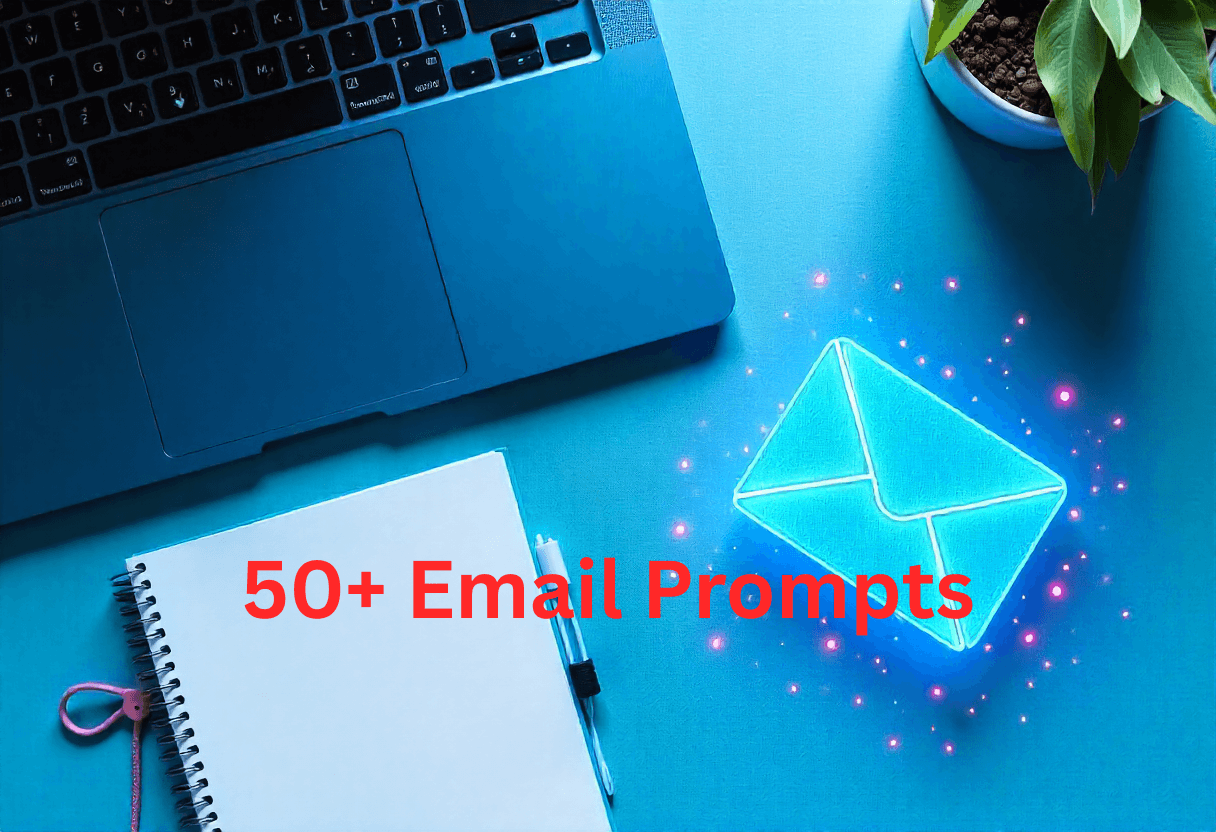
YouTube in 2025 isn’t what it used to be.
The platform has evolved into a highly competitive, algorithm-driven ecosystem — and if you’re a new or growing creator, getting noticed can feel like climbing a mountain with no map. With over 2.7 billion monthly active users and 500+ hours of content uploaded every minute, standing out today requires more than just good content — you need a clear, strategic approach.
That’s exactly what this blog offers: actionable YouTube marketing tips, latest growth tools, and step-by-step strategies designed to help you grow sustainably — even if you’re starting from scratch.
Whether you’re a solo entrepreneur, small business, or a passionate creator, you’ll walk away with real-world tactics that work in 2025 — not recycled advice from five years ago.
📌 New to YouTube? Start with the basics — check out our Beginner’s Guide to a YouTube Marketing strategy before diving into advanced strategies.
Let’s dive in!
❓What’s Changed in YouTube Growth Strategy for 2025?
If you’ve tried growing a YouTube channel in the past, 2025 might feel like a completely different game. That’s because the rules have changed — and creators who don’t adapt are left behind.
Let’s break down what’s different (and how you can turn these changes into growth opportunities):
📈 1. Algorithm Shifts: Retention Is King
YouTube’s 2025 algorithm puts massive weight on viewer retention and session time. It’s no longer just about click-through rates — it’s about how long people stay and what they watch next.
What matters now:
- Audience Retention: Keep viewers engaged past the 30-second mark.
- Session Duration: Encourage binge-watching via playlists and series.
- End Screens & Community Tab: Boost next-video clicks to increase session time.
💡 Pro Tip: Add “mini hooks” every 30–45 seconds to keep attention high.
🎬 2. Shorts + Long-Form = Hybrid Strategy Wins
Shorts are no longer optional. They’re fully integrated into YouTube’s growth algorithm and homepage recommendations. But long-form still drives depth and monetization.
How to leverage both:
- Use Shorts to attract new subscribers (snackable, high-velocity content)
- Use Long-form to build trust, teach, or sell
- Repurpose content using AI tools to create Shorts from longer videos
💡 Creators who combine Shorts + Long-Form see up to 2x faster growth.
🤖 3. Rise of AI Tools in Planning & Editing
AI has become a secret weapon for smart creators. From planning content to editing and thumbnail generation — automation is saving time and improving performance.
Popular AI tools in 2025:
- Opus Clip – auto-repurposes long-form videos into Shorts
- Pictory – turns scripts into AI-generated videos
- Thumbnail.AI – predicts which thumbnails will get the most clicks
- ChatGPT / Gemini – for content ideas, keyword research & scripts
🛠️ The result? Faster production, smarter decisions, and more consistent uploads.
🎯 4. Competition Is High — But Niches Are Thriving
Yes, the platform is more crowded. But that’s not a bad thing — because YouTube’s algorithm is built to serve micro-audiences.
Niche channels are winning by:
- Going deep, not broad (e.g., “Solo Travel for Indian Women” instead of just “Travel”)
- Building loyal micro-communities
- Serving underrepresented audiences
📊 You don’t need a million views. You need the right 10,000 people.
📹 What Kind of Content Works Best for New Channels in 2025?
If you’re just starting out or trying to gain traction on a small channel, the content you choose to create matters just as much as how often you post. In 2025, format + intent + timing = results.
Let’s explore what types of content are working best for new YouTubers right now.
⚡ 1. YouTube Shorts: The Fast Lane to Discovery
Shorts are dominating YouTube’s front page and subscriber growth algorithm. Think of them as your channel’s top-of-funnel traffic magnet.
Why Shorts work for new creators:
- Get discovered faster (YouTube promotes Shorts more aggressively)
- Require less production time
- Encourage experimentation with hooks, topics, and styles
Best-performing Shorts for new channels:
- Quick tips or “Did you know?” facts
- Reaction or commentary clips
- Fast-paced before/after tutorials (great for fitness, DIY, beauty)
✅ Example: @AliAbdaal repurposes podcast clips into bite-sized Shorts that regularly reach 100K+ views.
🧠 2. Tutorials, Explainers, and How-To Videos Still Win
Educational content is evergreen — and in 2025, it’s still one of the most reliable ways to build authority and attract search traffic.
What works best:
- Clear “How to” titles:
“How to Use Canva for YouTube Thumbnails”
“How to Grow a Cooking Channel with Zero Budget” - Screen recordings or step-by-step walkthroughs
- Answering specific questions your niche audience is searching for
✅ Example: A new tech creator making explainers on “How to Use ChatGPT for Homework” reached 10K subs in 3 months.
🎥 3. Storytelling Is Back — Especially in Niche Communities
If your goal is deep connection, not just views, storytelling builds loyalty. People subscribe to people — not just content.
Effective formats:
- “My journey from X to Y”
- “What I wish I knew before starting…”
- Behind-the-scenes, failures, and lessons
✅ Example: @KritikaGoel mixes solo travel tips with personal stories, keeping viewers emotionally invested.
📅 4. Evergreen vs. Trend-Based Content: You Need Both
Smart creators in 2025 mix evergreen videos (long-term search traffic) with trend-based content (short bursts of high traffic).
| Evergreen Content | Trend-Based Content |
|---|---|
| Tutorials, explainers | Challenges, trending sounds |
| Reviews, case studies | Viral reactions, event commentary |
| FAQ answers | “This just dropped” product updates |
How to balance it:
- Post 2 evergreen videos for every 1 trend-based video
- Use trends to get quick spikes and hook new audiences
- Use evergreen to build lasting search traffic
🚀 Pro Tip: Study What’s Working for Other New Creators
Reverse-engineering rising channels in your niche is one of the smartest ways to create content that works.
Look for creators who:
- Started within the last 6–12 months
- Have 10K–50K subs (not too big, not too small)
- Get strong engagement (likes/comments) on specific video formats
Use tools like vidIQ, TubeBuddy, or Channel Crawler to find and analyze them.
🧠 How Do You Find the Right Topics to Make Videos On?
Creating consistent content is great — but creating the right content is what drives growth. In 2025, smart creators use a mix of tools, audience intent, and AI to find video topics that rank, engage, and convert.
Let’s break down how to discover winning video ideas step by step.
🔍 1. Use Keyword Research Tools That Are Built for YouTube
YouTube is a search engine — so knowing what people are already searching for gives you a head start.
Top tools for YouTube keyword research:
- VidIQ: Offers keyword difficulty, related terms, and trending videos in your niche
- TubeBuddy: Suggests long-tail keywords and competitor tags
- Google Trends (YouTube filter): See seasonal patterns and rising topics
- YouTube Autocomplete: Type a phrase like “how to grow a channel…” and note what autofills
💡 Pro Tip: Look for high search volume + low competition when starting out.
🤖 2. Use AI Tools (Like ChatGPT) to Brainstorm Fresh Ideas
AI in 2025 isn’t just for writing — it’s a creative partner.
Try prompts like:
"Give me 10 YouTube video ideas for beginners in [your niche]""What are trending topics in the [fitness, beauty, finance] niche?""What are the top pain points for new [niche] creators?"
Tools like ChatGPT, Gemini, and Claude can generate:
- Video titles and thumbnails
- Scripts and outlines
- Topic clusters for a full content calendar
📊 3. Expand Ideas Using AnswerThePublic, Semrush, and Forums
Once you have a seed keyword, these tools can help expand it into dozens of content angles.
- AnswerThePublic: Shows “how,” “what,” and “why” questions real people ask about your topic.
- Semrush: Check search volume, trends, and related queries (great for advanced keyword planning).
- Reddit/Quora/YouTube Comments: See what your audience is actually asking or complaining about.
✅ Example: A query like “how to edit YouTube videos on phone” can turn into:
- “Free video editing apps for beginners”
- “CapCut tutorial for YouTube Shorts”
- “Best phone settings for cinematic videos”
👀 4. Understand Viewer Intent: Beginner vs Buyer vs Binge
Not all video ideas serve the same purpose. In 2025, creators grow faster when they mix content based on viewer intent.
| Intent Type | Goal | Content Example |
|---|---|---|
| Beginner | Education | “How to Start a YouTube Channel with Just a Phone” |
| Buyer | Monetization / Affiliate | “Best Budget Cameras for YouTube in 2025” |
| Binge | Engagement / Retention | “What I Learned Posting 30 YouTube Shorts in 30 Days” |
How to apply it:
- Map out your funnel with a mix of each intent
- Add CTAs tailored to the viewer’s stage (e.g., lead magnet for buyer, playlist for bingers)
✨ Quick Checklist to Validate Your Video Topic
✅ Is it searchable? ✅ Does it match your target audience’s pain point or goal? ✅ Is it low-competition for your channel size? ✅ Can you add a unique angle or experience? ✅ Are similar videos performing well?
📆 How Often Should You Post on a New YouTube Channel?
When you’re starting out on YouTube, one of the biggest questions is: “How often should I post to grow fast, without burning out?”
The short answer? Consistency matters more than frequency. The long answer? Let’s break it down.
📌 Ideal Posting Frequency for New Channels in 2025
For most beginner or solo creators, the sweet spot is:
🔄 1 to 2 videos per week (mix of Shorts and Long-form)
Why this works:
- Enough to feed the algorithm and build momentum
- Realistic for solo creators or small teams
- Allows time to edit, optimize, and avoid burnout
⚠️ Note: Daily uploads won’t help if your quality drops. It’s better to show up well than just often.
🎯 Quality vs. Quantity: What Actually Works?
Many new creators fall into the trap of uploading more = growing faster.
But YouTube in 2025 favors value-packed videos, not just volume.
| Upload 5 Low-Effort Videos | Upload 1 Great Video |
|---|---|
| Low watch time & retention | High retention & shares |
| Weak channel signal | Strong channel signal |
| Less chance of ranking | More algorithm love |
Focus on:
- Hook in the first 15 seconds
- Strong editing and sound
- Clear, audience-focused titles & thumbnails
✅ One high-retention video can outperform 10 low-quality ones.
🎥 How to Batch Record and Stay Consistent
The #1 secret of consistent YouTubers? Batch production.
Here’s a simple system:
- Plan 4 video ideas at once (use the keyword tips above)
- Script or outline them in a single day
- Film all 4 videos in one shoot day
- Edit 1–2 per week (or outsource if possible)
Tools to help:
- Notion or Trello for video planning
- CapCut / VN / DaVinci Resolve for editing
- Google Calendar to block “YouTube time” weekly
🗓️ Example: 30-Day Beginner YouTube Posting Plan
Here’s a realistic, balanced plan if you’re just starting out:
| Week | Long-Form | Shorts | Goal |
|---|---|---|---|
| Week 1 | 1 Tutorial | 2 Quick Tips | Build base content |
| Week 2 | 1 Explainer | 1 Personal Story | Add personality |
| Week 3 | 1 Product Review | 2 Reels Remix Shorts | Test engagement |
| Week 4 | 1 Case Study | 1 Trend-Based Short | Analyze and optimize |
💡 After 30 days, review what performed best — then double down on the formats/topics that resonated.
🚀 How Can You Make Your Videos Stand Out in Search and Suggested?
Creating great content is step one. But if no one clicks it, it won’t grow. To win on YouTube in 2025, you need to optimize for both search (YouTube SEO) and suggested (click-worthy content).
Here’s how to make your videos impossible to ignore:
🧠 1. Smart Titles That Match Intent + Intrigue
Your title needs to do two things:
- Help YouTube understand what your video is about (for SEO)
- Make viewers want to click (for CTR)
Best practices:
- Put the keyword first: “YouTube SEO Tips: How I Rank in 24 Hours”
- Use curiosity: “I Posted 1 Short Every Day for 30 Days — Here’s What Happened”
- Add urgency or benefit: “Grow Your Channel FAST (No Gear Needed)”
💡 Tools: Use TubeBuddy’s Title Analyzer or ChatGPT to A/B test titles.
🎨 2. Thumbnails That Stop the Scroll
In 2025, AI-generated thumbnails are common — but the winning ones still feel human and bold.
Tips to create scroll-stopping thumbnails:
- Use bold, readable text (2–4 words max)
- Show emotion or a clear “before/after” visual
- Use contrast: bright subjects on dark backgrounds (or vice versa)
- Avoid clutter — focus on one central idea
✅ Free tools: Canva, ThumbnailTest.com, Thumbnail.AI (predicts CTR potential)
📝 3. Descriptions That Support Ranking (And Convert)
Your video description helps both SEO and viewer retention.
Use this 3-part format:
- Hook + keyword-rich summary of the video (first 2 lines show in preview)
- Timestamps (chapters) for navigation + YouTube signals
- Links + CTAs: playlist, lead magnet, related videos
💡 Pro Tip: Include related keywords and 2–3 hashtags (#YouTubeTips, #SmallCreator)
Example opening:
Learn how to grow your YouTube channel in 2025 using step-by-step strategies that work for beginners and solo creators. In this video, we’ll cover YouTube Shorts, keyword tools, AI editing hacks, and more.
🏷️ 4. Tags, Captions & Timestamps = Optimization Trifecta
These don’t hold as much weight as titles/thumbnails — but they still support visibility and engagement.
Use all 3 smartly:
- Tags: Use 5–10 relevant phrases (main topic + variations + niche)
- Captions: Auto-captions are okay, but upload cleaned-up .SRT files for better accuracy
- Timestamps/Chapters: Add these in your description — improves retention + ranking
Example timestamp format:
makefile
CopyEdit
00:00 Intro
00:45 Why YouTube is harder in 2025
02:30 Top growth tips for beginners
05:10 Tools that save editing time
🔗 5. Use Internal Linking Like a Pro (Cards & Playlists)
The more videos a viewer watches, the better your channel performs. That’s why internal linking is a growth hack most new creators skip.
How to use it:
- Playlists: Group related content — “YouTube Growth Tips” series
- End Screens: Recommend the next logical video at the end
- Cards: Add during natural break points — “Watch this next…”
✅ Example: If you’re teaching Shorts strategy, link to your “Thumbnail creation tutorial” video in the card.
📢 How Do You Promote Your YouTube Videos Off-Platform?
YouTube isn’t an island. If you want to grow faster, you need to take your content where your audience already hangs out — outside of YouTube.
Here’s how smart creators in 2025 are driving views before the algorithm even picks up their video.
🌐 1. Share in Niche Communities (Without Spamming)
Your ideal viewers are probably hanging out in forums, group chats, or niche communities. The key is to add value first, then share your content in context.
Where to post:
- Reddit: Find subreddits related to your niche (e.g., r/YouTubeStartups, r/PersonalFinance)
- Discord servers: Join creator collab or niche interest servers
- Quora answers: Add your video as a deeper dive into your answer
- Facebook Groups: Many niche-focused groups allow YouTube links on certain days
✅ Tip: Before posting, engage genuinely for 1–2 weeks to build trust. Share content only when it adds to the discussion.
📱 2. Cross-Post to Other Social Platforms
Don’t make the mistake of just copying and pasting links. Repackage your YouTube content natively for each platform:
| Platform | Format | Strategy |
|---|---|---|
| Instagram Reels | 30–60s teaser clips | Add subtitle overlays + link in bio |
| Educational posts or carousels | Ideal for thought leadership + professional niches | |
| Threads | Quick “hot takes” or quotes from video | Start a thread → link to full video |
| Twitter/X | Quote key points, tag relevant accounts | Share as mini-thread with YouTube link at end |
💡 Bonus: Repurpose YouTube Shorts for vertical platforms like IG, TikTok, and FB Reels.
✉️ 3. Embed in Blogs, Newsletters, and Lead Magnets
This is how you create long-term traffic outside of social media.
Where to embed:
- Blog posts: Add your videos to relevant articles (especially TOFU/MOFU content)
- Email newsletters: Share a “Video of the Week” with a quick summary
- Free lead magnets: Include private video links or bonus tutorials inside guides or PDFs
✅ Example: “Download our YouTube Growth Tracker — includes an exclusive walkthrough video.”
⚙️ 4. Automate Your Promotion Using Smart Tools
Manual posting takes time. Instead, use automation tools to scale your promotion.
Top tools to consider:
- Zapier: Auto-share new uploads to Discord, Slack, Facebook, etc.
- Buffer or Hypefury: Schedule promotional posts across multiple platforms
- Beehiiv or Mailchimp: Automate newsletters with your latest video
💡 Use UTM tags in your links to track where traffic is coming from.
🧩 Pro Tip: Think Like a Marketer, Not Just a Creator
Every video is a mini marketing campaign. Promote it 2–3x after launch, not just once.
Use this mini-promo calendar:
- Day 0: Launch on YouTube + Instagram + Email blast
- Day 2: Post a quote/image from the video on Threads or LinkedIn
- Day 5: Start a Reddit or Quora thread around the video’s topic
- Day 7: Post a Short/Reel teaser linking back to the main video
📊 What Are the Most Important Metrics for New Channels?
If you’re a new creator, obsessing over view counts alone won’t get you far. The real growth drivers in 2025? Watch time, retention, and relevance.
YouTube’s algorithm rewards videos that keep people watching — and coming back for more. Here’s what metrics you should monitor — and what they really mean.
⏱️ 1. Watch Time: The Growth Signal You Can’t Ignore
Watch Time = total minutes viewers spend watching your content.
YouTube promotes videos that contribute to longer sessions — so higher watch time means more impressions and better ranking.
✅ Tip: Focus on delivering value fast, using pattern interrupts, and encouraging next-video clicks to extend total watch sessions.
Good benchmark for new channels: 🎯 Aim for 50–70% video completion rate for long-form videos.
📈 2. Audience Retention: Are You Holding Their Attention?
This metric tells you when viewers drop off — and it’s one of the most important ranking factors.
What to look for:
- Sharp drop at start = weak hook
- Gradual decline = normal
- Spikes = replays or rewatchable sections
- Dips = confusing or boring moments
💡 Use YouTube Analytics > Content > Retention Graph to identify drop-off points. Restructure future videos accordingly.
🎯 3. Click-Through Rate (CTR): Is Your Title + Thumbnail Working?
CTR shows the % of people who clicked your video after seeing the thumbnail.
YouTube rewards high CTR + strong watch time combo.
How to boost CTR:
- A/B test thumbnails using TubeBuddy or ThumbnailTest
- Use emotion or curiosity in titles
- Avoid clickbait — misleading videos hurt retention and watch time
Good CTR range for new channels: 🎯 4%–6% is average; 8%+ is great.
👥 4. Subscribers Gained Per Video: Is Your Content Worth Subscribing To?
This stat tells you how well each video converts casual viewers into loyal fans.
Found in: 📍 YouTube Studio → Analytics → Subscribers → See “per video” breakdown
Improve this by:
- Calling out who your content is for in your intro
- Asking for a sub after delivering value, not before
- Creating a “mini-series” that keeps people invested
🎬 5. Shorts vs Long-Form Metrics: Understand the Difference
Shorts often have:
- Higher view counts
- Lower watch time per video
- Faster growth in subscribers
Long-form videos:
- Drive more watch hours (needed for monetization)
- Increase session duration
- Better for building deep trust
🧪 Strategy tip: Track subs, retention, and watch time separately for Shorts vs Long-form. Don’t treat them the same.
📊 6. How to Access and Use YouTube Analytics (Step-by-Step)
- Go to YouTube Studio
- Click Analytics in the left menu
- Use these tabs:
- * Overview → Key metrics at a glance
- * Content → CTR, retention, top-performing videos
- * Audience → Returning vs new viewers, subs gained
- * Reach → Impressions, traffic sources
- * Engagement → Watch time, average view duration
✅ Use the “Compare to previous” toggle to see what’s improving.
🧩 Bonus: What Metrics Don’t Matter as Much Early On?
- Impressions: Only matters after your title/thumbnail is dialed in
- Like/dislike ratio: Useful, but not a direct ranking signal
- Comments: Great for feedback, but not a growth driver unless used to build community
❤️ How Can You Turn Early Viewers into Subscribers and Fans?
Getting views is step one. But building a real community — loyal subscribers who watch everything you post — is how you grow a lasting channel.
Here’s how to turn cold viewers into raving fans in 2025:
🎯 1. Use On-Screen & Verbal CTAs the Right Way
The classic “Don’t forget to like and subscribe!” isn’t enough anymore.
Here’s what works better:
- Verbal CTA (contextual): “If this helped, hit subscribe — I post new YouTube growth hacks every Friday.”
- On-screen CTA (visual): Animated subscribe pop-ups or end screen prompts
- Time it right: Ask after you’ve delivered value — not at the start.
💡 Tip: Use tools like Canva, Premiere Pro templates, or InVideo to add slick animated CTAs.
💬 2. Ask for Comments — Then Pin the Best One
Comments are your fastest path to community — and they boost engagement signals for the algorithm.
What to do:
- End videos with a question: “What’s your #1 YouTube struggle right now?”
- Reply to every early comment (especially in first 24 hours)
- Pin a thoughtful comment that shows personality or adds value
✅ Example: “This was better than a paid course. Subscribed!” ← pin this immediately to build trust.
📺 3. Create Binge Playlists & Content Clusters
One great video might earn a view. But a smart playlist strategy earns a subscriber.
How to do it:
- Group related videos into playlists by topic: “YouTube Tips for Beginners,” “Shorts Growth Hacks,” etc.
- Link videos together using end screens and cards
- Use titles and thumbnails that look like a series (cohesive branding)
📊 Bonus: Binge sessions increase total watch time and viewer loyalty — both big signals for the algorithm.
📧 4. Funnel Viewers into Your Email List with a Lead Magnet
YouTube owns your audience — but email gives you direct access to your fans.
Steps:
- Create a free download — like a “YouTube Growth Tracker,” “Content Planner,” or “Thumbnail Template Pack”
- Link it in your video description and pinned comment
- Use tools like ConvertKit, MailerLite, or Beehiiv to manage your list
Example CTA in video:
“Want to plan your next 10 videos with zero stress? Grab my free YouTube content planner — link’s below.”
🔁 Bonus: Be Consistent, Not Just Present
Turning viewers into fans is about reliability + personality.
- Stick to a schedule (even if it’s once a week)
- Show your face and story — people subscribe to you, not just the info
- Reuse your best-performing hooks across new videos
🧠 Remember: Trust builds over time. Be helpful, be human, and show up consistently.
❌ What Are the Common Mistakes New Creators Make in 2025?
YouTube in 2025 gives beginners more tools than ever — but also more ways to get stuck. Most new creators don’t fail because of lack of talent — they fail because of avoidable mistakes.
Let’s go over the biggest traps new YouTubers are falling into (and how to avoid them):
🧾 1. Copying Without Context
Yes, it’s smart to study successful creators. No, it’s not smart to blindly copy what they do — especially if your audience, niche, or brand is different.
What goes wrong:
- Using titles that worked for others, but don’t match your content
- Copying formats or trends without adapting them to your niche
- Emulating big creators with large teams (when you’re solo)
✅ Instead: Borrow ideas, but filter them through your voice, audience, and goals.
📺 2. Chasing Views Instead of Building Connection
New creators often obsess over virality — but long-term growth comes from community, not just clicks.
Red flags:
- Making random videos just because they’re trending
- Not talking to your audience directly or replying to comments
- Neglecting storytelling or personal touch
💡 Pro Tip: Focus on value + relatability — and subscribers will follow naturally.
📉 3. Ignoring the Data (and the Comments)
Your audience is telling you what’s working — through watch time, retention, and actual feedback. But many beginners never open YouTube Analytics or engage with their viewers.
Common issues:
- Repeating formats that don’t retain viewers
- Not optimizing titles/thumbnails after publishing
- Missing ideas and content gaps shared in comments
✅ Action Step: After every 3–5 videos, review performance and adjust your content plan based on what resonated.
🪪 4. Inconsistent Branding & Upload Schedule
Trust builds through recognition and reliability — two things new creators often overlook.
Mistakes to avoid:
- Random titles, thumbnail styles, or intro formats
- Posting 3 videos one week, then disappearing for a month
- Switching content pillars too often
How to fix it:
- Use consistent fonts, color palettes, and formats in thumbnails
- Stick to 1–2 main content themes (e.g., YouTube growth + AI tools)
- Publish on a repeatable schedule — even once a week is enough
📅 Think long-term: YouTube growth is a marathon, not a sprint.
🔄 How Can You Stay Motivated and Consistent in Your First 90 Days?
Let’s be honest: the first 90 days of being a YouTuber are the toughest. Low views, slow growth, imposter syndrome — they’re all normal.
But this is also the most important phase. If you stay consistent now, you’ll build the habits that carry you through the next 3 years.
Here’s how to stay on track when the initial hype wears off:
📈 1. Follow a Simple “0 to 1000 Subs” Framework
Instead of obsessing over numbers daily, focus on process goals that compound.
Your first 90-day growth path:
| Phase | Focus |
|---|---|
| Days 1–30 | Upload 4+ videos, learn your editing flow, create your channel brand |
| Days 31–60 | Analyze top performers, post 1 Short + 1 Long-form weekly |
| Days 61–90 | Refine thumbnails/titles, test CTAs, start pushing traffic off-platform |
💡 Milestone mindset: First 100 subs → First 1K views → First comment from a stranger
🧰 2. Use Planning Tools to Stay Organized
Burnout often happens because creators feel overwhelmed. Avoid this by batching, scheduling, and simplifying.
Best tools for beginners:
- Notion templates: For content calendars, keyword banks, upload checklists
- Google Calendar: Time-block filming/editing sessions
- Trello / ClickUp: For tracking ideas and progress
✅ Tip: Plan your month in one sitting — then just execute.
🤝 3. Collaborate Early — Even With Small Creators
You don’t need big collabs to grow. Micro-collaborations help you stay motivated, learn faster, and expand your audience.
Ways to collaborate:
- Do a reaction or “duet-style” video with another small creator
- Shout each other out in Shorts or Stories
- Join a small creator group on Discord or Threads
🎯 Bonus: You’ll gain accountability and emotional support — just as valuable as views.
🧠 4. Remember: Progress Beats Perfection
Many new creators stall because they’re trying to make the perfect video. But growth on YouTube happens through iteration, not perfection.
Remind yourself:
- Your first 10 videos will always be your worst — and that’s okay
- Done is better than perfect
- You can improve thumbnails, titles, and SEO after uploading
💬 Creator mindset mantra: “Clarity comes from action, not overthinking.”
✅ Recap Checklist: Staying Consistent in the First 90 Days
- Publish at least 6–8 videos (Shorts or Long-form)
- Set a weekly upload goal and stick to it
- Analyze performance after every 3 videos
- Collaborate or engage with 3–5 fellow creators
- Focus on learning > winning
✅ Conclusion: Real YouTube Growth = Clarity + Consistency + Community
If you’re serious about growing your YouTube channel in 2025, remember this:
It’s not about going viral — it’s about getting better, staying consistent, and building real connections.
You don’t need fancy gear. You don’t need a massive budget. You just need:
- Clarity around your audience and niche
- Consistency in your content and branding
- Community that supports and grows with you
🔖 What’s Next?
- 📌 Bookmark this blog so you can come back to each section as you grow
- 📥 Download the FREE 30-Day YouTube Growth Tracker to plan, track, and improve every upload
- 📚 New to YouTube? Start with our Beginner’s Guide to Launching a Channel
- 📊 Want to go deeper? Check out our blogs on
→ YouTube SEO Strategies
→ How to Buikd YouTube Marketing Plan Like a Pro
🚀 Now it’s your turn.
Take the first step. Post the first video. Track your progress. And keep showing up — your audience is out there, waiting to find you.
Let’s grow, creator. 🌱






